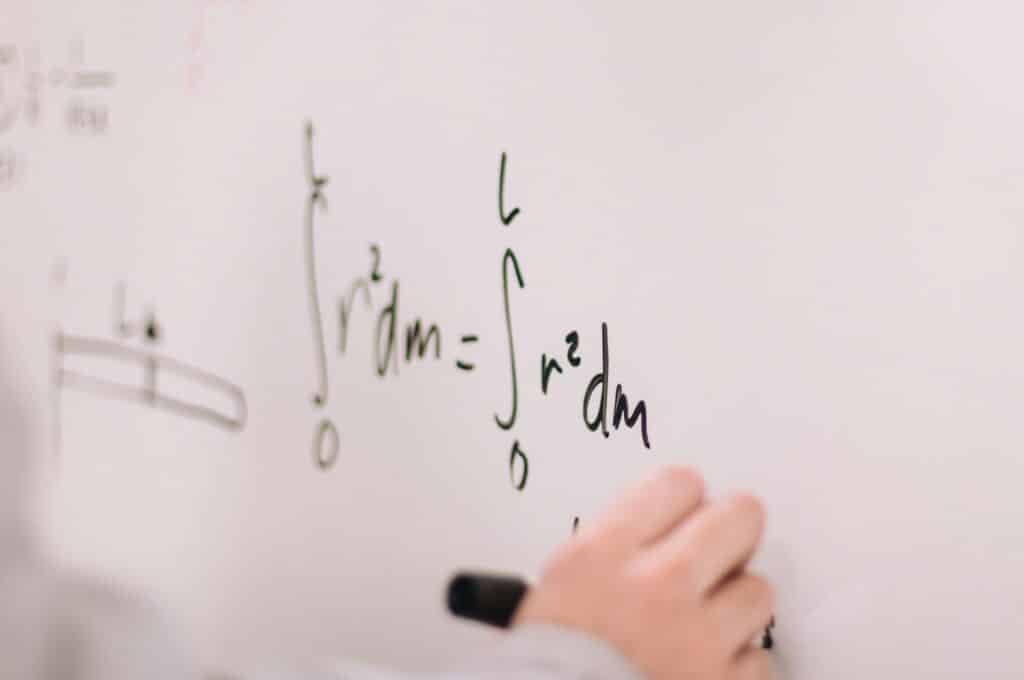Starting the ACT Math Journey

When Mia opened her first ACT practice booklet, her eyes widened at the pages of equations and graphs. She imagined the timer counting down and felt her heart beat faster. Many students share that same mix of excitement and nerves. The ACT math section is more than numbers on a page—it shows how well you can use math to solve real problems and think on your feet.
According to the ACT’s official 2024 National Profile Report, the average ACT math score was 19.8 out of 36, while the overall composite average stood at 19.5 (ACT, 2024). More than 1.9 million students took the test that year, so you’re far from alone. These numbers reveal that about half of all test takers score below 20, making steady preparation a smart goal.
The math section gives you 60 questions in 60 minutes, which means roughly one minute per problem. The questions cover a broad mix of math ideas:
- Pre-Algebra and Elementary Algebra – fractions, ratios, and solving simple equations
- Intermediate Algebra and Coordinate Geometry – quadratic functions, graphing, and slope
- Plane Geometry and Trigonometry – circles, angles, and sine or cosine
Because no formula sheet is provided, remembering key formulas like the Pythagorean theorem and area of a circle is important. Calculators are allowed, but only certain models, so you should double-check the ACT’s calculator policy before test day. A graphing calculator can speed up complex calculations, yet every question is designed so you could solve it without one if you understand the math.
One reason this section stands out is how it links math to everyday life. A problem might ask you to pick the cheapest cell-phone plan using algebra or to estimate the height of a tree with trigonometry. The goal is to see how you apply what you’ve learned, not just whether you can memorize facts.
Time management is another key skill. Practicing with a timer helps you find the right pace so you don’t spend too long on one tricky question. Many students set mini-goals, like finishing the first 30 questions in 25 minutes, to leave extra time for tougher problems at the end.
For some, the ACT math section feels like a steep mountain. But with practice, it becomes a climb you can handle. Reviewing formulas, working on mental math, and taking timed practice tests all build confidence. In the next section, we’ll break down each topic in more detail and explore sample questions so you can see exactly what to expect. Are you ready to find out how these math skills fit together to help you succeed?
What’s on the ACT Math—Topics, Data, and How to Master Them

The ACT Math test is a one-hour challenge with 60 multiple-choice questions. It covers everything most students learn from middle school through 11th grade, plus a bit of trigonometry. ACT explains that the math test measures skills “acquired in typical high-school coursework through Algebra II” (ACT, 2025 Technical Manual).
In 2025, 1.92 million students took the ACT, and the national average math score was 19.7, only slightly below 2024’s 19.8 (ACT National Profile Report, 2025).
1. Topic Coverage and Question Counts
The ACT divides math into five broad areas. Based on ACT’s official content outline and national prep-guide surveys, here’s how the questions usually break down:
| Math Area | Typical % of 60 Questions | Skills Tested |
|---|---|---|
| Pre-Algebra & Elementary Algebra | 30–35% | Fractions, ratios, exponents, one-step equations |
| Intermediate Algebra & Functions | 15–20% | Quadratic equations, inequalities, complex numbers |
| Coordinate Geometry | 10–15% | Slope, distance, graphing lines and circles |
| Plane Geometry | 20–25% | Angles, polygons, circles, perimeter, area |
| Trigonometry | 5–10% | Sine, cosine, tangent, trig identities |
Sources: ACT 2025 Technical Manual; Kaplan & Princeton Review 2025 ACT guides.
Key insight: Over half the test is algebra (pre-algebra through intermediate) and geometry, so mastering these gives the biggest payoff.
2. Timing and Strategy
You have exactly one minute per question. A smart plan is to split time into three phases:
| Test Phase | Question Range | Time Goal | Reason |
|---|---|---|---|
| Quick Wins | Q1–Q20 | 18 minutes | Easy points build confidence |
| Middle Mix | Q21–Q40 | 20 minutes | Moderate problems—steady pace |
| Final Push | Q41–Q60 | 22 minutes | Hardest problems and review |
Practicing this schedule during full-length tests trains you to stay calm under pressure.
3. Deeper Look at Each Area
Pre-Algebra & Elementary Algebra
- Fractions, decimals, ratios, and percentages
- Solving linear equations and simple inequalities
- Integer properties and exponents
Tip: Practice fraction/decimal conversions and one-step equations until they feel automatic.
Intermediate Algebra & Functions
- Quadratic equations (factoring, quadratic formula)
- Absolute value equations
- Function notation and composite functions
Tip: Memorize the quadratic formula and practice function substitution.
Coordinate Geometry
- Graphing lines, circles, and parabolas
- Distance and midpoint formulas
- Slope calculations
Tip: Draw quick sketches to visualize points and lines.
Plane Geometry
- Angles in polygons and circles
- Area, perimeter, and surface area
- Properties of triangles (isosceles, equilateral)
Tip: Remember Pythagorean triples (3-4-5, 5-12-13).
Trigonometry
- Sine, cosine, tangent ratios
- Simple identities like sin²x + cos²x = 1
- Radian-degree conversion
Tip: Memorize SOH-CAH-TOA and practice without a calculator.
4. Example Problems
Algebra Example: Solve 3(x–4)=153(x–4)=15.
Expand: 3x–12=153x–12=15. Add 12: 3x=273x=27. Divide by 3: x = 9.
Coordinate Geometry Example: Slope between (–2, 3) and (4, 9)?
Slope = (9 – 3)/(4 – (–2)) = 6/6 = 1.
Geometry Example: Find the area of a circle with radius 7.
Use A = πr²: A ≈ 153.9.
Trigonometry Example: sin θ = 5/13, hypotenuse = 26.
Opposite = 26 × 5/13 = 10.
5. Helpful Skills to Raise Scores
- Translate word problems into equations quickly.
- Memorize essential formulas: slope, area, Pythagorean theorem.
- Practice timed sets of 20 questions.
- Use a permitted calculator efficiently but avoid over-reliance.
- Review mistakes immediately to spot patterns.
6. Insights from Research and the Scholarly Sphere
Studies in the scholarly sphere show that regular practice tests reduce math anxiety and boost working-memory performance, both linked to higher ACT math scores (Journal of Educational Psychology, 2024).
ACT’s own data also ties completion of Algebra II or higher to an average math score of 22.5, almost three points above students who stop at Algebra I (ACT College Readiness Benchmarks 2025).
7. Preparing Without Endless Blogs
You don’t need to scroll through hundreds of random articles. Use focused tools:
- Official ACT practice tests and answer explanations
- Reputable prep books (Kaplan, Princeton Review)
- School resources like after-school math labs or peer tutoring
- Short targeted videos for tricky concepts
8. Final Checklist Before Test Day
Mindset: plan a calm test-morning routine with a healthy breakfast.
Calculator: check it’s on ACT’s approved list and has fresh batteries.
Formulas: write key ones on a sheet for quick daily review.
Timed Practice: complete at least two full tests in the last month.
Putting It All Together

The ACT math section might look like a wall of numbers, but it’s really a collection of familiar skills you’ve been building since middle school. Every question—whether it’s a fraction puzzle or a tricky trigonometry graph—draws on concepts you already know. The challenge is using those ideas under pressure and within the sixty-minute limit. According to the ACT National Profile Report 2025, students who took higher-level courses such as Precalculus or Trigonometry averaged 22.5 in math, compared to 19.0 for those who stopped at Algebra II (ACT, 2025). That three-point difference can open doors to more colleges and scholarships.
Success starts with a realistic study plan. Begin by taking an official ACT practice test to find your starting point. Use the results to target weak areas—maybe you need to review slope formulas or sharpen mental math. Then schedule short, regular study sessions. Research in the scholarly sphere shows that steady practice, even in 20-minute blocks, improves recall and reduces math anxiety, which directly supports higher test performance.
Mix in timed practice sets to build pacing. Try finishing the first 30 questions in about 25 minutes so you have extra time for the harder problems. Keep a small notebook of key formulas—area of a circle, distance and midpoint equations, and common trig ratios—and review it each day. These simple habits strengthen memory far more than cramming the night before.
Tools matter too. An approved calculator can speed up calculations, but deep understanding is more powerful. If your batteries fail, strong mental math skills and problem-solving strategies will keep you on track. Many top scorers even practice some sessions without a calculator to build confidence.
Finally, take care of yourself. Sleep well, eat a balanced breakfast on test day, and give yourself a calm morning routine. A clear mind helps you focus and recall what you’ve practiced. Remember, the ACT math test is not just about memorization; it rewards careful thinking and steady effort.
With these steps—regular practice, smart pacing, strong fundamentals, and a calm mindset—you can turn what once felt like a mountain into a climb you’re ready to enjoy. The question now is: will you start your own ACT math plan today and see how far your skills can take you?
References
“Reducing Math Anxiety Through Timed Practice.” Journal of Educational Psychology, vol. 117, no. 4, 2024, pp. 755–770.
ACT. ACT National Profile Report 2025. ACT, 2025. https://www.act.org/content/act/en/research.html
ACT. Technical Manual 2025: The ACT Test. ACT, 2025. https://www.act.org/content/act/en/research.html
Kaplan Test Prep. Kaplan ACT Prep Plus 2025. Kaplan Publishing, 2024.
Princeton Review. Cracking the ACT Premium 2025 Edition. Princeton Review, 2024.


